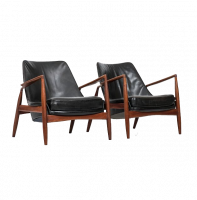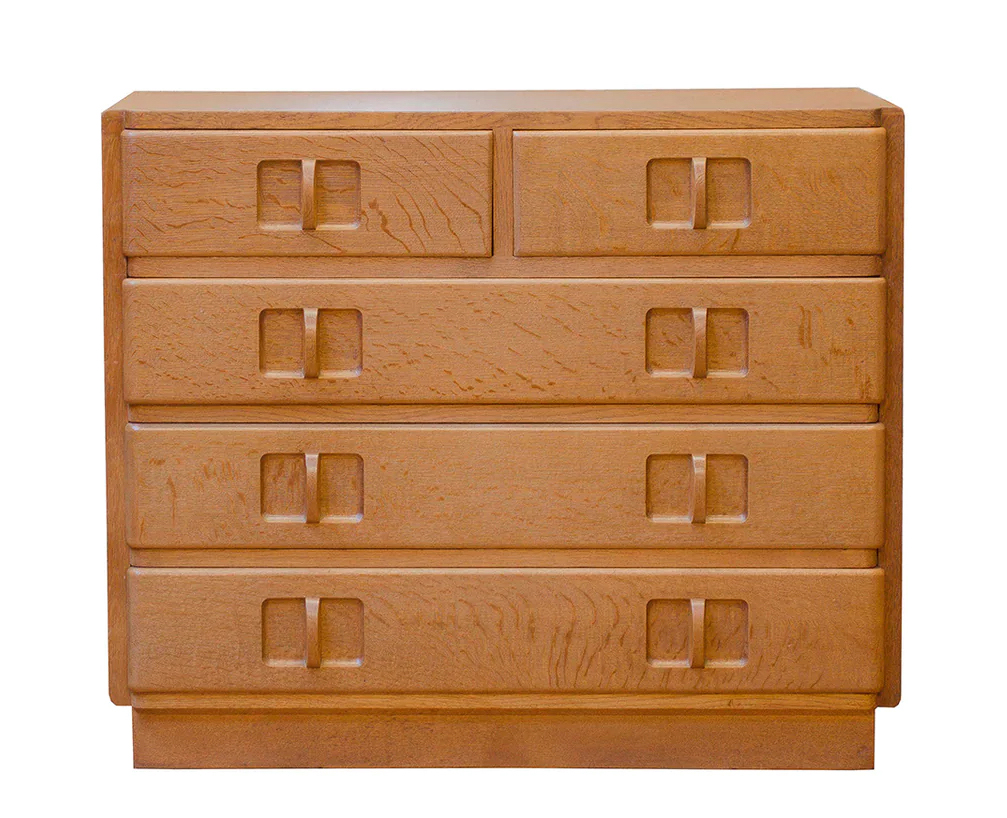Gordon Russell Ltd, started life as Russell and Sons, a furniture design company created by Gordon Russell, backed by his father, in 1922. Receiving no formal design training, Gordon Russell taught himself design through reading, and working alongside and observation of skilled craftsmen using traditional skills.
Gordon Russell was born in London in 1892, moving to the village of Broadway in the Cotswolds, in 1904, as his father had bought an inn that was to become a country hotel. Russell left school at 16 to work in the family’s antique restoration and furniture repair workshop, that serviced the needs of the hotel. Working alongside the workshop’s skilled craftsman, and near the Guild of Handicraft workshops in Campden, lead Russell to become interested in furniture design and the Arts & Crafts Movement, and eventually he began designing is own work. Gordon Russell’s furniture design career was interrupted by WW1 (along with his brother, he volunteered in 1914 for the Worcestershire Regiment) but on his return in 1918, he continued designing and making.
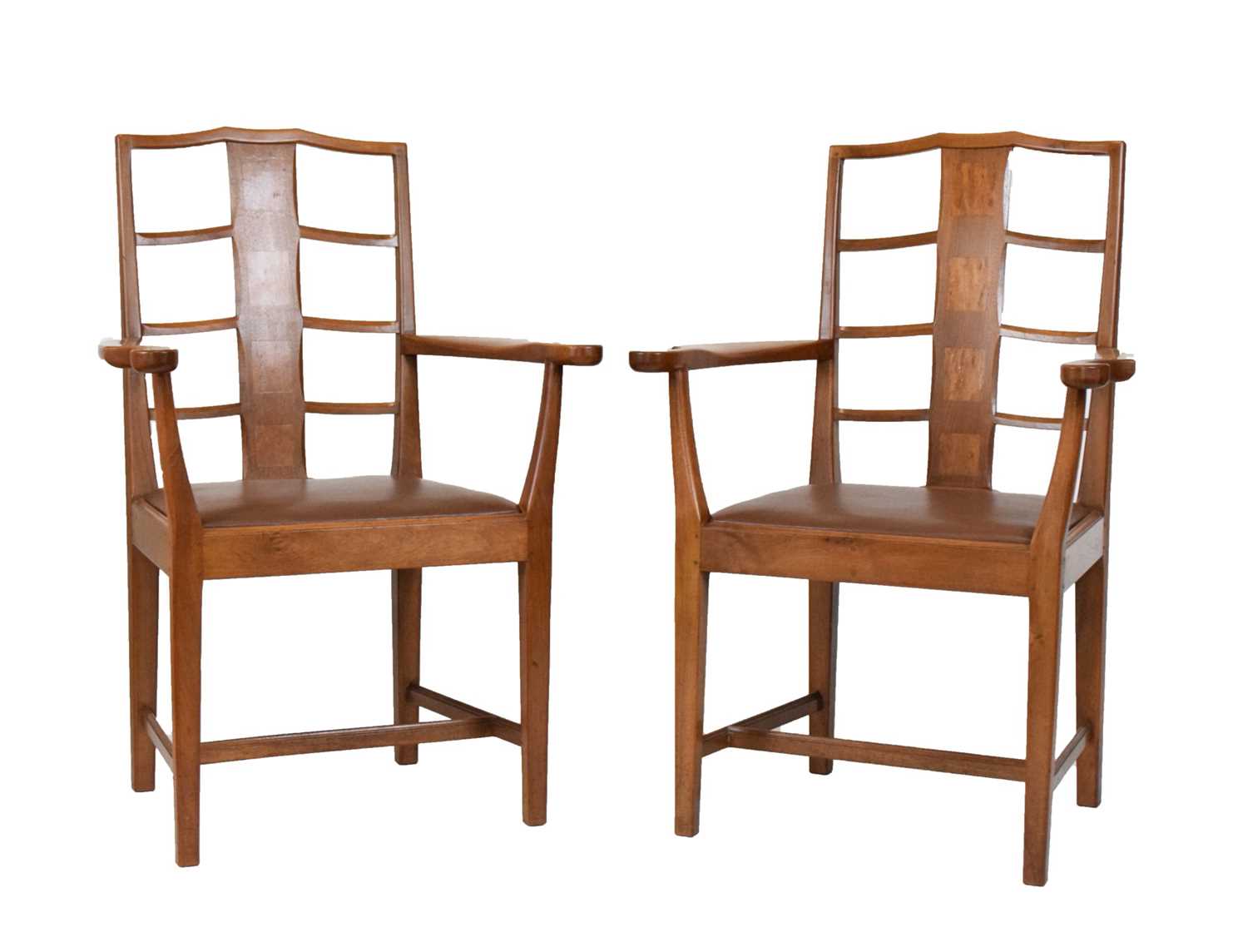
Inspired to create furniture that would last and be valued by future generations, Russell started Russell and Sons in 1922, and the company grew in strength throughout the 1920s, opening it’s first London showroom in Wigmore Street, in 1929. Throughout this period Russell was heavily inspired by the Arts and Crafts movement on many of its philosophies concerning working conditions, housing, education, design and craftsmanship, but he differed in his approach to production: whereas the Movement held a strict no machinery ethos, Gordon’s approach was to blend hand and machine making as a way to make affordable furniture for the “decent, ordinary man”. Throughout the 1920s Russell designed over 1000 products, including metalwork and glassware, alongside his furniture. Because of his own route through non-formal training, Russell was committed to apprenticeships within the company which eventually lead to the business employing 100 craftsmen and management by the end of decade.
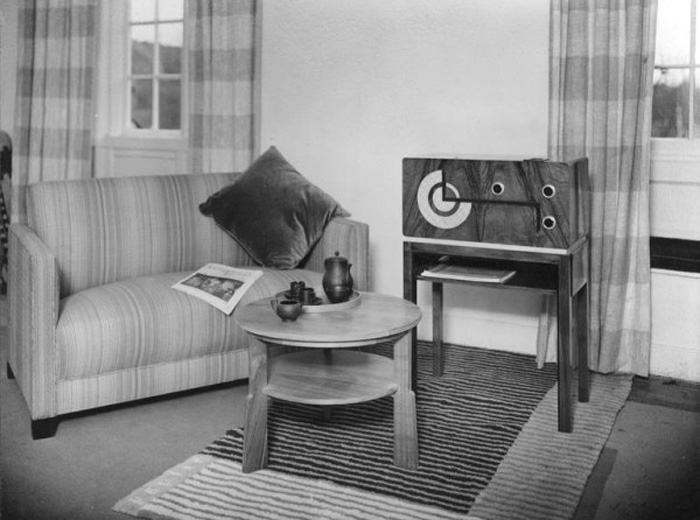
The 1930s bought the depression, and changing attitudes and tastes. Recognising that new ideas in design were sweeping Europe and Scandinavia, Russell suggested that his youngest brother, Dick, should train as an architect, and so be well equipped to produce furniture in the Modernist style. After qualifying, Dick returned to the company and took over the role of Designer from Gordon, leading a team that included David Booth, ‘Curly’Russell (no relation) and Eden Minns, that would take the company into a new design era. Despite adapting well, the company struggled with the depressed economy, having to close their London shop as a result. Their saviour came in the form of the Murphy Radio Company, who commissioned Gordon to design and make cabinets for radio sets, gramophones and televisions, and throughout the 1930s Dick Russell and Eden Minns produced over 70 designs to do just that. Despite the depression, radio sales were going strong, and by 1939 the firm had almost 1000 employees, the majority engaged in Murphy Radio production in a newly built factory at Park Royal, London.

A new, larger shop was opened on Wigmore Street, offering a ride range of affordable furniture and home furnishings with many of the soft furnishings designed by Marian Pepler. The film ended the 1930s as a leader in the world of design, working both in retail and contract markets, furnishing colleges, offices and hotels. A major influence on the company’s strategy through this time was Nikolaus Pevsner; a refugee from Nazi Germany, he brought with him a wide knowledge of design.
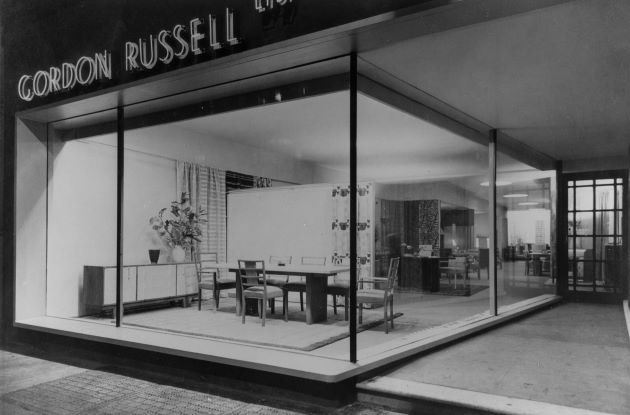
The success of the company was interrupted by WW2, a large number of the male workforce were called to serve in the war, and, like other furniture manufacturers, regular production was replaced with the needs of the war. For Gordon Russell Ltd, this meant manufacturing aircraft recognition models for the Observation Corps; prototype aircraft parts; and latterly sections of the Mosquito bomber. As in all other areas of manufacturing and food production, women were employed in the workshops and became highly skilled. Outside of the company, Gordon Russell was appointment by the Government to lead the design panel set up to design and manufacture utility furniture CC41, having the find and lead hundreds of small workshops to do so. Although materials were in short supply, Russell made sure that the furniture was well designed and much of it is still in use today. In recognition of his contribution Gordon Russell was awarded an OBE.

The end of the war saw normal production resume, and with the war restriction on use of materials now lifted, new designs were able to be introduced. Although Gordon was still chairman, most of his time was spent in London, committed to public service, and as such the workshops were effectively begin run by Dick Bee and Ted Ould. The design and drawing office was lead by ‘Curly’ Russell, with Dick Russell now running his own design practice, and acting as consultant for Gordon Russell Ltd. At this time Gordon Russell played an integral role in the newly formed Council of Industrial Design, and helped mount events like the 1946 exhibition ‘Britain Can Make It’ and the Festival of Britain in 1951, both created to promote and celebrate British design. As part of the Festival of Britain, Dick Russell designed the Lion and Unicorn building alongside Robert Goodden. In 1952 the Design Centre opened in London, with a Gordon as its Director, and in 1955 he was awarded a Knighthood in recognition of his services to Design and Industry. Russell retired in 1959 and resumed a more active interest in the company.
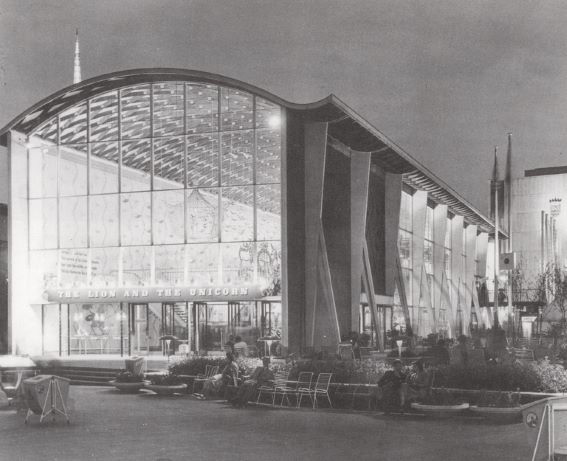
Between 1968 and 1970s many of the directors and designers who been with Gordon Russell Ltd since its early days retired and new designers and managers were appointed, Trevor Chinn became Chief ‘in house designer’ and Martin Hall led the design team in the newly created Gordon Russell Contracts, all lead by Russell, now reinstated as Chairman. Throughout the 1970s the company’s focus increasingly swung to the designer led sector, and soon it withdrew from the domestic market altogether. The film now expanded from the UK into overseas markets including Europe, USA, and the Middle East and established workshops in Japan.
Sir Gordon Russell died in 1980, leaving behind him a significant legacy within British design. Ray Leigh was appointed Chairman until Gordon Russell Ltd was sold in 1986 to William Hands, another established manufacturer of furniture, founded in 1906.
All Restoration

